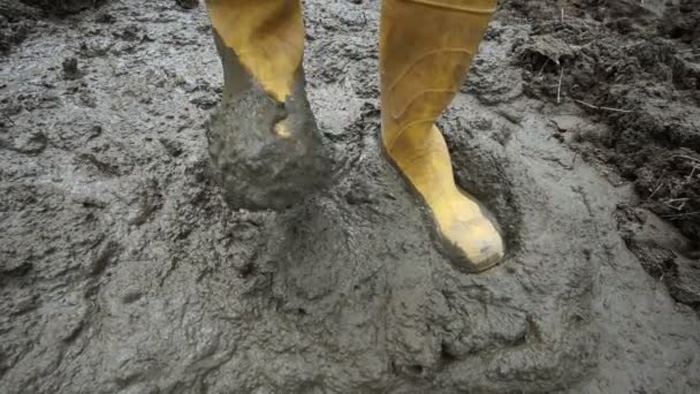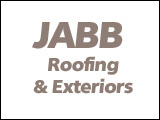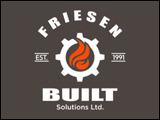There are several unique challenges to growing trees, shrubs and perennials in our local region. If you live anywhere in the Red River Valley other than east of a line running from Saint Malo to Steinbach, you will be very familiar with the term Red River gumbo. And you have definitely experienced the ten pound boots caked in mud. Interesting enough some plants may find it equally as difficult to live in gumbo as we do walking in it. The challenge I want to discuss today is the heaviness and tightness of our soil. It comes as a puzzle to some, how we can grow great grain, corn and soy beans yet struggle with some other varieties. The reality is that some crops and trees have no issue with our soil type. Others have a challenge! We’ve all walked in a freshly tilled Garden that seems perfectly soft when a week before it had been rock hard or very sticky. Clay seems to have a very fine line of happiness.
Our soil can be waterlogged and sticky or it can be dry and hard as a brick. There are tree varieties that grow a lot slower in heavy soil then sandy loam. We have two options when dealing with this challenge. One is to grow what simply grows well in heavy clay. The other is to amend your soil if you can. A simple list of some of the trees that do well here would be Ash, Elm, Manitoba Maple, Willows and Poplar. There are multiple numbers of trees that can actually handle the clay but don’t do as well if it is usually soggy. Such as most flowering crab, White Spruce, Linden, although they do grow slower in clay, Black Walnut, Butternut, and Ohio Buckeye. There are others on that list but the lines start to get blurry. My point is, pick something that you don’t have to change the soil for, or be willing to change the soil. Trees like mountain ash, pears (most fruits actually), Amur Maple, and Silver Maple can be challenging in our area.
If you’re wanting to grow a large Cottonwood but know you need to change the soil it could be very expensive! Simply because the soil you would have to bring in would have to cover over a sixty to eighty foot circle. If you’re looking to amend soil for a few smaller trees or small shrubs that is much more practical and possible. At the Nursery I have amended the soil in my back Orchard. I added five loads of three-way mix topsoil. Approximately five to six inches deep. I now have no issues with alkalinity or it being too wet.
If you’re living in a new development it is normal to only have good topsoil soil in the first two to three inches. This will grow grass just fine, but trees and shrubs will need six to ten inches. I often have to recommend either adding soil as a berm or digging out a little clay and making the desired spot for the tree to be a little deeper, then filling the area in with lighter topsoil. Earlier I alluded to having no alkalinity issues in my Orchard now. I am no chemist but I do know our pH is usually high around the area. This will often show up as a yellowing leaf with green veins. Once again there are varieties that thrive in our soil despite this high ph and there are varieties that cannot tolerate it at all. Plants such as Rhododendron, Red Maple, Red Oaks, and Blueberries are all borderline Hardy here, but they can’t stand our soil and will find it toxic. Some surface amendments that work relatively well are amounts of peat moss and sand. This will lower your salt and pH levels and also help the water to drain away much easier. When growing specialty crops, weeping tile also helps to bring internal drainage. Though this is helpful, this may not be quite as practical for a small garden or Orchard. To make it practical, I would suggest mounding areas that are heavy or wet, creating a sort of hill. This allows the roots of the plants easier growth at surface level and removes the challenge of pooling water. If you have an area with low, wet, sticky soil willows will be your best option. Keep the majority of your other plants in higher, dryer and lighter soil.
You can always add water but you can’t take it out.




